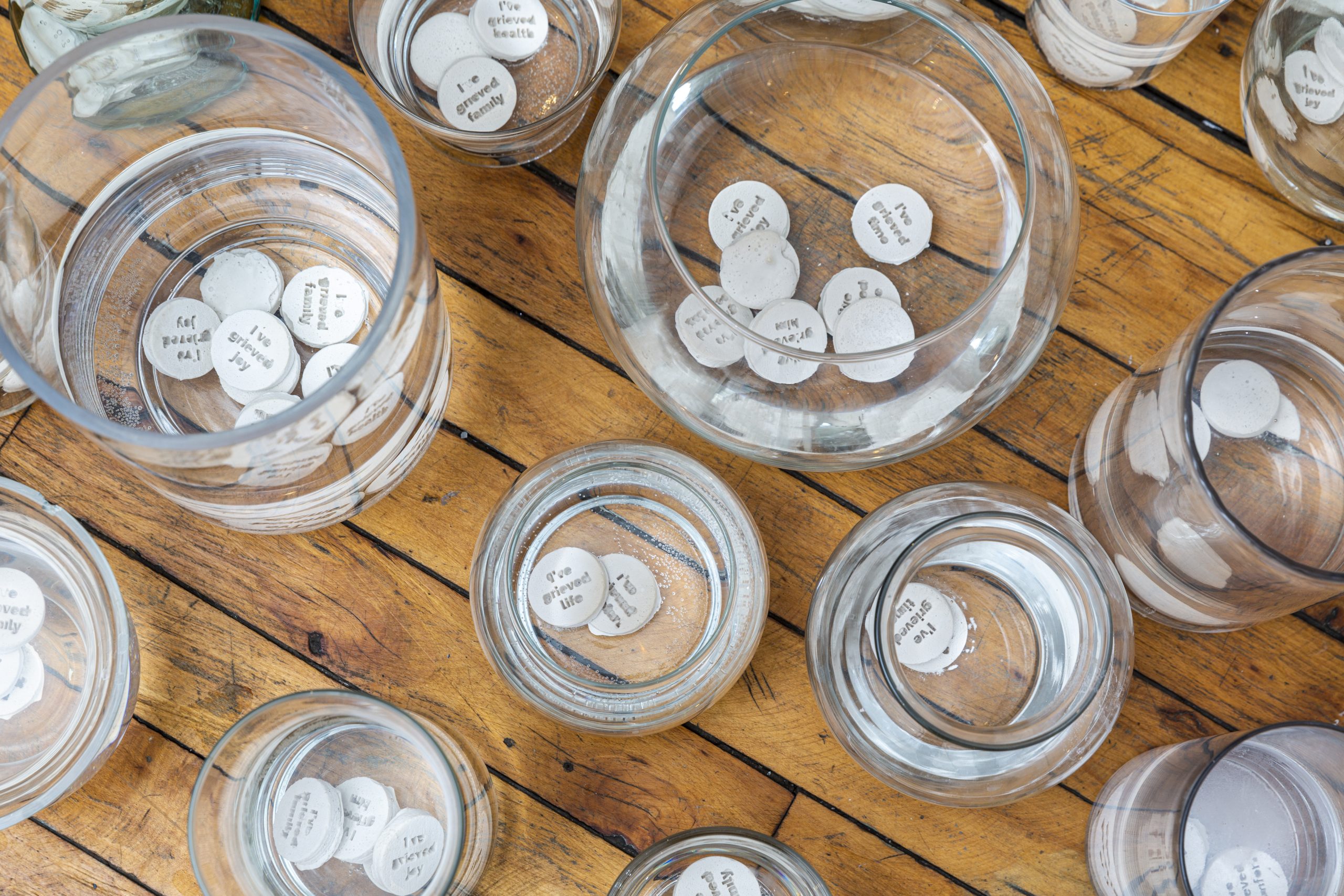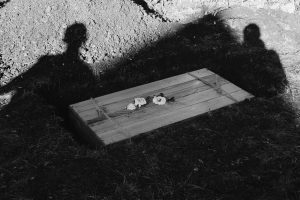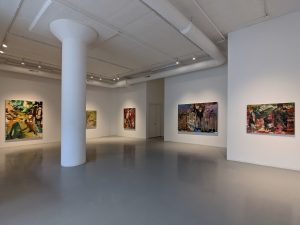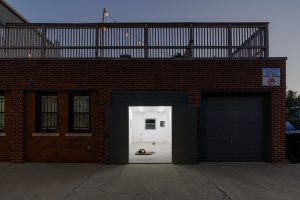I met Francine Almeda dancing last summer. We’ve only spoken briefly, saying hello or waving goodbye — usually from a dance floor. So, when one of our first real-life conversations skyrocketed toward an intimate subject of hardship and loss, I felt even more moved to hear about the works in Space to Say, an exhibition Almeda recently curated at Heaven Gallery.
Almeda, Heaven’s manager and director of Jude Gallery in Pilsen, curated Space to Say after grieving a personal loss. The three-person show, featuring Yesenia Bello, Salvador Dominguez, and Yasmeen Nematt Alla, touches on communication and symbols in place of words. Each of the works resembles barriers to language and the new language that can come into fruition as a result.
The initial pillar for the show came when Almeda saw Nematt Alla’s interactive installation Wishing Upon a Grieving Well a few years ago at Acre Projects and felt moved by the action of taking an engraved coin — with various phrases inscribed in them — and throwing it into a vase filled with water. Normally, throwing a coin into a wishing well involves secrecy — we hope for something to work out, for a career plan to pan out, to win a million dollars, to fall in love. Nematt Alla reimagines this ritual as a space for viewers to grieve: to wish to overcome their grief, to wish to better understand it, or to simply ruminate on it. After throwing the plaster coin into one of the jars of water, the words inscribed on the coin are erased as it dissolves (taking roughly six weeks to dissolve completely).
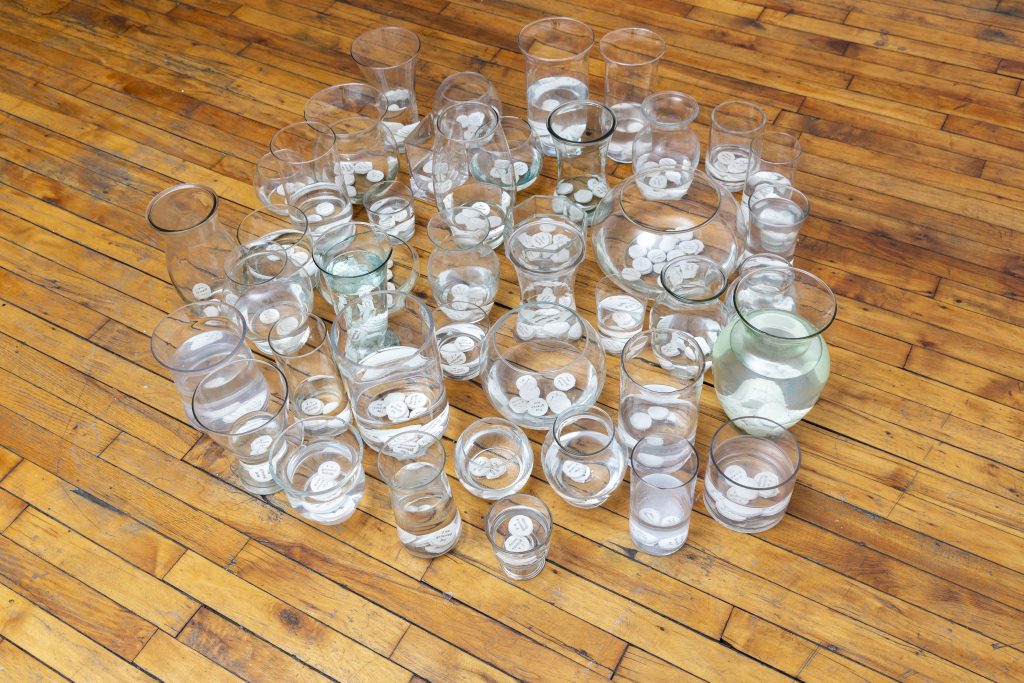
When I picked up one of the coins while visiting Space to Say, after a year of sudden change and personal loss myself, I felt particularly moved. Each of the coins had an inscription of a phrase. I picked one up. I grieved him, it read. Throwing the coin into the water, watching it bubble and dissipate, felt like a release — the weight of grief was let go. I texted a close friend after leaving Heaven, telling her that I was surprised to feel such a visceral reaction when tossing the coin. “Art works!!” I typed out to her and hit send. The act of tossing the coin reminded me, and I’m sure many other viewers, that grief is an ongoing process and I clearly wasn’t finished with my recovery just yet.
While the wishing wells sit in the center of the show in the form of various water-filled glass vessels, Yesenia Bello’s fabric suspensions encircle the exhibition. They are blueprints, or as she describes them, “a strategy for choreography,” which invites viewers to walk and move through the space. We participate in gymnastics through each of her works, weaving our bodies in and out of the installation. Beckon (te llamo) best resembles this invitation in motion. Small beads and threads connect the fabric, often in hues of the Mexican and American flag, never coming undone.
Bello tells me that when she was younger, she felt a pressure to “fit in and assimilate,” and to “learn the ways of being an American.” In the following years, she said she “moved towards English speaking and shed her Spanish.” Now, she says her language is still sometimes fragmented between the two. “These fragments felt like embodied loss and gain all at once. It was from an early age, too, that I found the pleasure in visual arts, a space where I could create a whole new space to communicate where I made the rules and where there was no wrong and right,” she explains. In Bello’s Reaching (te alcanzo), the two pieces are separated but still represent a motion of gravitating towards one another — similar to a flying trapeze, with no singular individual flying.
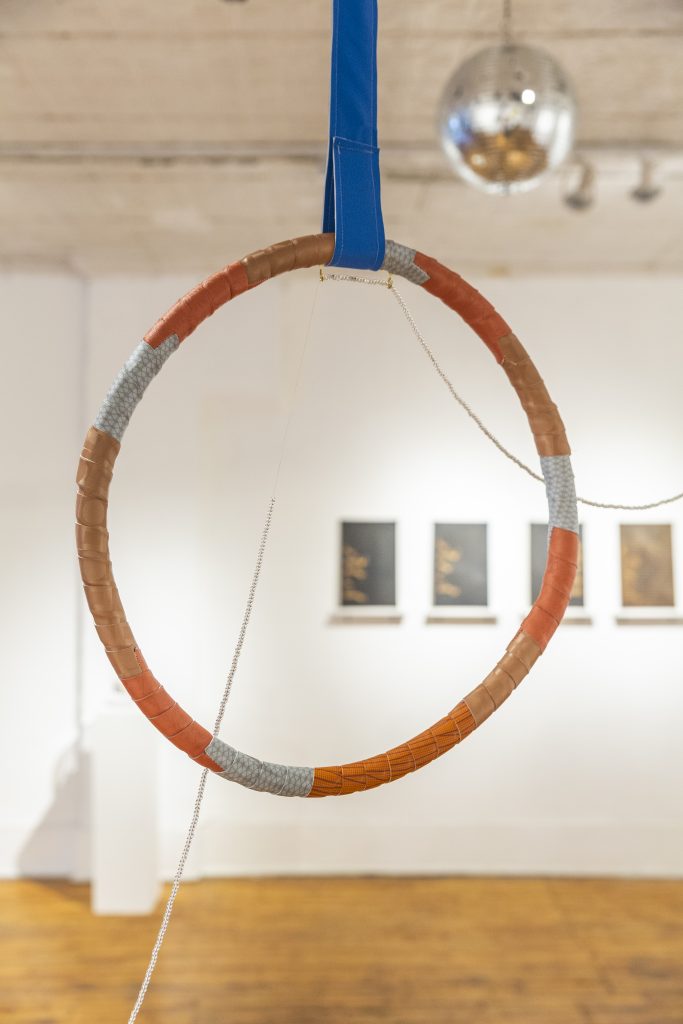
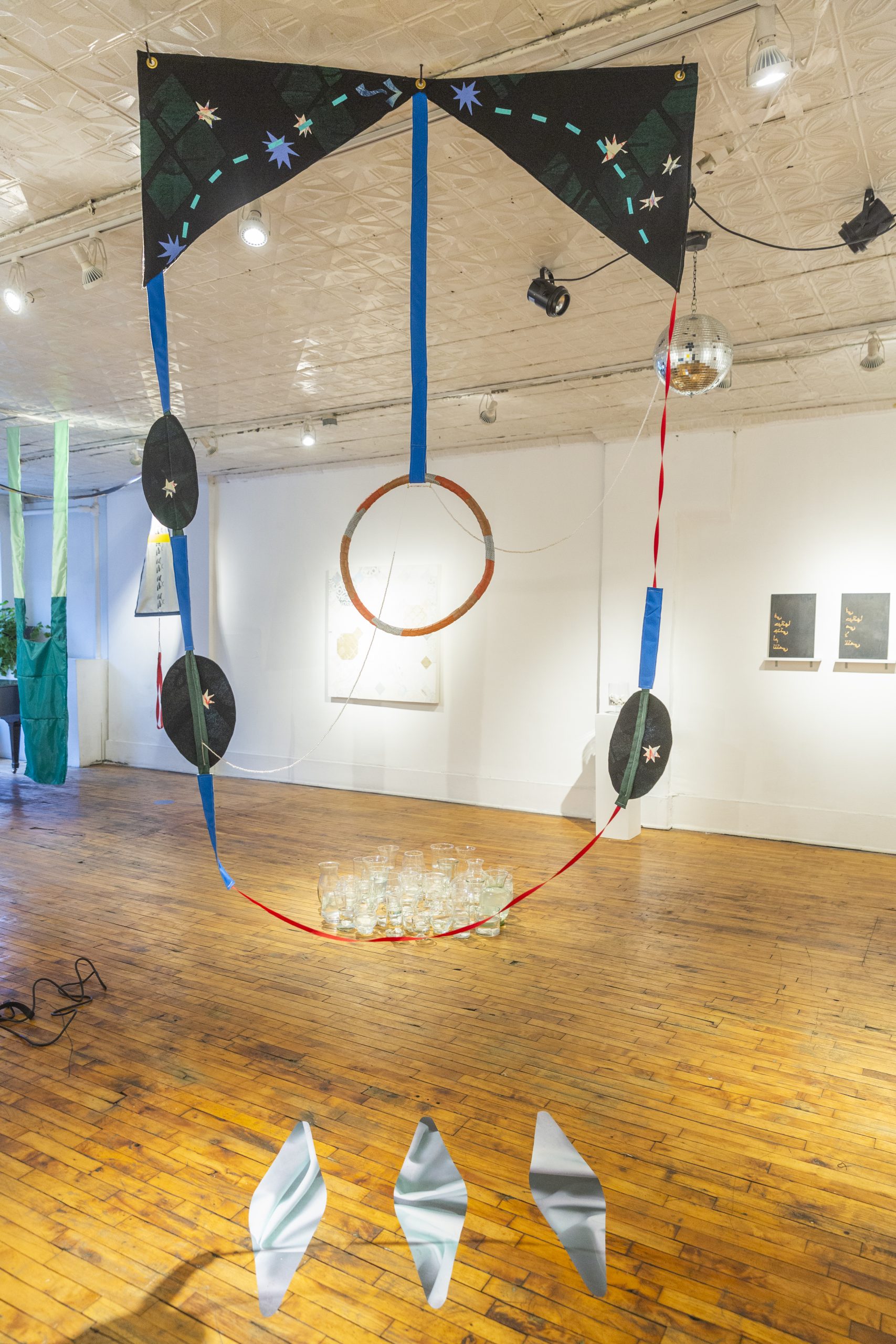
“I liken the great sacrifices, weight, and pressure to start a new leg of life, [as well as the] faith that the thing you’re moving towards will catch you and the literal jumping through hoops that immigrant families face, to that of the physical contortions that these landscapes (gymnastics, acrobatics, the circus) make visible through physical form,” said Bello.
The exhibition, overall, displays the “leap of faith” that immigrant families take in order to start over, to establish themselves and the future of their loved ones. “I think about flying trapeze, a body letting go of one bar to latch on to the other, suspended in mid-air for a slight moment,” explains Bello, “and it feels very similar to the act of immigration.”
Much of the exhibition nods towards movement. Salvador Dominguez, a Mexican-born artist who curator Almeda found through the BIPOC visual artist database Rupture, creates relief prints of manholes and other identifying patterns referencing blue-collared work and manual labor. Dominguez explains that his first language was Spanish and he learned English in school. “Knowing two languages offers me a broader perspective,” he says. “I have insight into two different worlds, including the space between both.” Dominguez says he was drawn to art at an early age and that in turn, art became the translation between two languages. “By expressing myself visually, it didn’t matter what language I spoke.”
Dominguez’s relief prints are iconographies of references to family and memory. He says his interest in various materials and processes has led him to explore how unexpected materials and processes intersect. In his work, he casts paint onto silicon mold, creating paint skins. The skins are then wrapped around hand-cut wooden tiles where he grouts them into a position of tiles. “I often imagine my role as an artist similar to that of a translator, picking apart and rearranging two worlds into one,” Dominguez says. He calls his relief paintings part of a “personal library.”
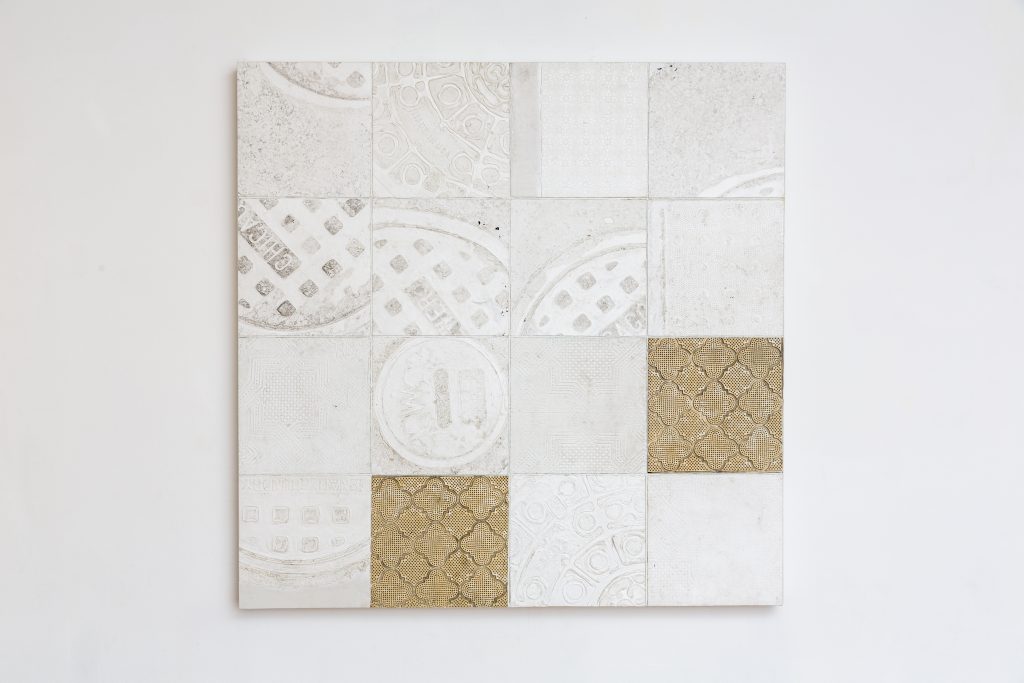
The relief prints incorporated into Dominguez’s work are taken from places he has traveled as well as objects he has seen that have marked important moments in his life, turning them into maps of his memory. “Part of the appeal [of] sewer grates and sidewalks [for me] is how easily they are recognized. By introducing these fragmented but familiar images, my hope is that a wider audience will be drawn to explore the paintings further.”
In the corner of the gallery is Dominguez’s Door Frame, a steel and cast bronze sculpture representing a physical passage through space, similar to Bello’s loops and portals. The door is a muscle within the space where the sharp-pointed stakes claim the corner of the gallery. The empty space in the center of the sculpture reimagines barriers, fencing, and ways to “keep people out,” instead inviting them through the center. This form of imagery is a navigational tool that reshapes how we view traveling and what it means to walk through an open door.
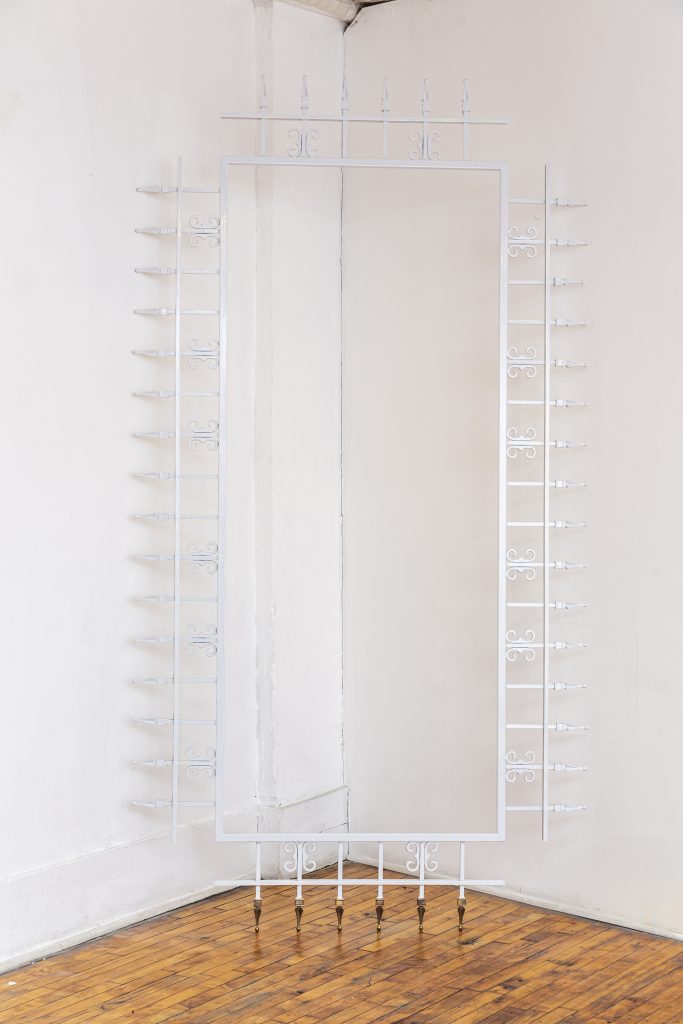
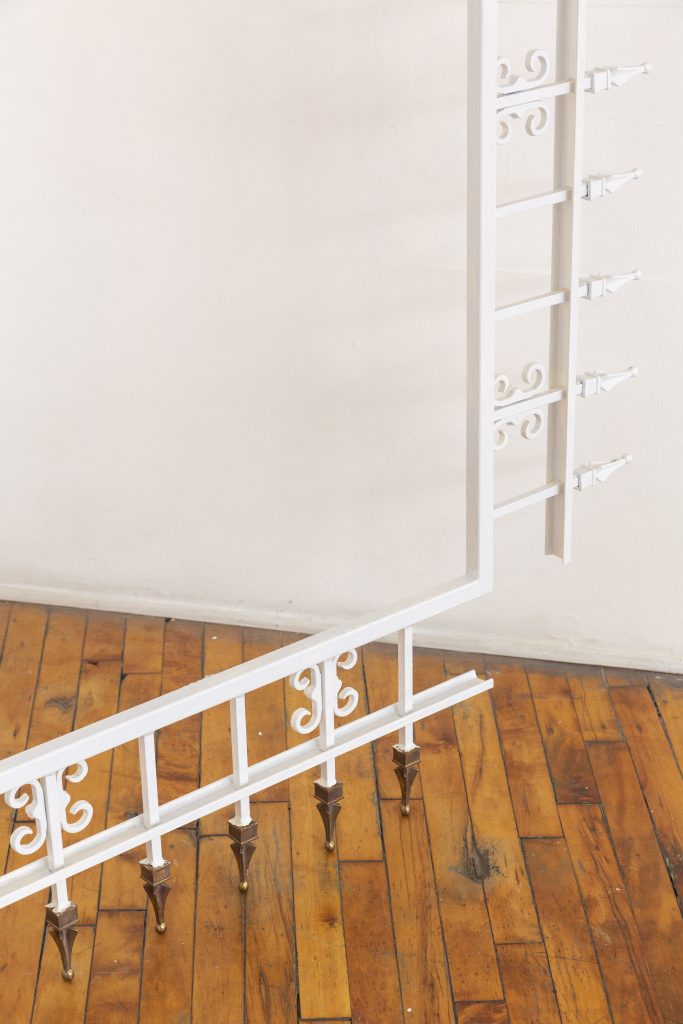
In the exhibition, the artists hold space for people to speak, listen, feel, and flow within the in-betweenness of language. It’s here where people, especially young people, may feel a yearning for identity and language. And it’s here where the artists hope viewers will meditate.
Space to Say is on view at Heaven Gallery from March 18 through May 15, 2022.
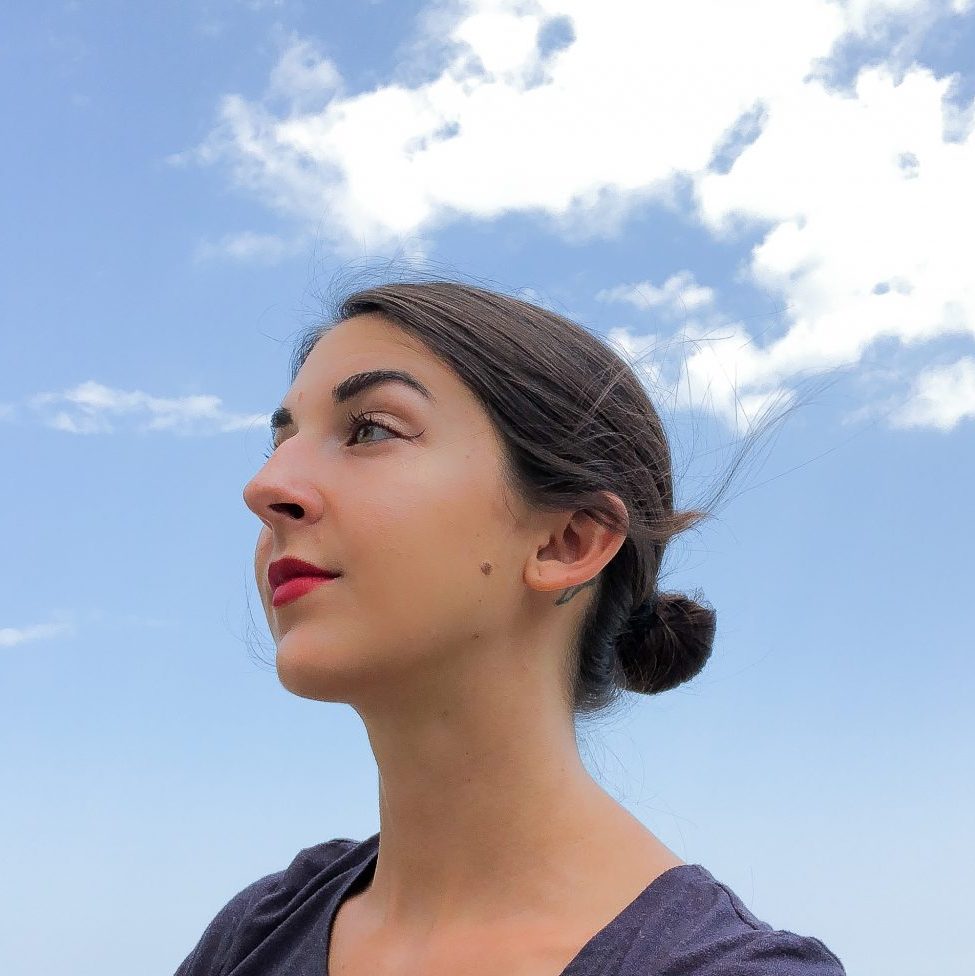
S. Nicole Lane is a writer based on the south side. Her work can be found on Playboy, Rewire, SELF, the Chicago Reader, and other corners of the internet, where she discusses sexual health, wellness, and the arts. She is the deputy editor of Giddy, a sexual wellness website. Follow her on Twitter. Photo by Jordan Levitt.
